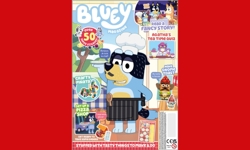A large section of the report is based on mapping current purchasing behaviours, which has never been covered in this detail before…
Mapping the RRM World
Today’s consumers are having their purchasing patterns shaped by the widespread use of the Recurring Revenue Model (RRM), from an increasing range of companies such as Amazon, Netflix, Spotify, Graze and Naked Wines, to name just a handful.
While 41% of magazine buyers have a magazine subscription, a higher 46% hold a subscription to other Media & Entertainment (M&E) services, by far the most common being a TV / Film service, such as Sky or Netflix, with a 32% penetration. So, other media RRMs are actually more widely used than magazine subscriptions by magazine buyers.
Looking beyond M&E, other non-media RRMs have a lower, but still significant 22% penetration. The most widely used are gym and health club memberships (12%). The number of companies using RRM is vast, ranging from food through to personal grooming and on to items such as socks and shirts. RRM seems to be the “flavour of the month”.
Amazon is also growing its subscription presence through Amazon Prime. A massive 89% of magazine buyers use Amazon – an indication of its awesome scale, with 9% subscribing to Amazon Prime, which is setting new standards of customer service. Intriguingly, Amazon is employing an old-fashioned, pay-upfront, lock-in, annual payment model, rather than the more open-ended schemes used by the likes of Netflix and Spotify. Although all-you-can-eat monthly payments are very popular, how consumers actually want to pay for their subscriptions is not overwhelmingly in one direction and that subject forms an important section of the report.
Mapping Magazine Purchasing
The start point of the whole project was to map out how readers buy their magazines now. Two key factors are ‘Purchase Channel’ and ‘Content Platform’…
Purchase Channel: Consumers are increasingly multi-channel in their magazine buying, so the silo approach still used by most publishers is simply no longer sustainable. Joining up the dots of retail and subscription into a more flexible and coherent single offer is essential to the future health of the industry.
The chart summarises the detail of how consumers currently buy their magazines:
* Retail is still the dominant channel: 54% use retail exclusively with an additional 24% who use both retail and subscription channels at the same time. So, that means that a total of 78% are actively using retail to make their magazine purchases.
* A total of 41% of consumers have subscriptions: 17% subscription-only plus the 24% who use both retail and subscription channels in parallel.
* The 24% dual channel users are the most engaged and prolific magazine consumers, spending significantly more on their magazine habit than single channel buyers; they are also the ones most resistant to the general decline in magazine reading.
Content Platform: How readers actually consume their magazines is also massively important and drives so many other behaviours.
This is a complex and rapidly changing area, but two key conclusions stand out. Firstly, print is still the dominant platform with only 30% of readers having any kind of digital element to their magazine brand relationship. Secondly, multi-platform consumers are the “sweet spot” and spend significantly more than single platform users of magazines. However, ‘Print First’ readers have noticeably different behaviours from ‘Digital First’, particularly in how much they are prepared to pay for digital magazine products.
Other Key Behaviours: There are other key factors shaping how people buy magazines:
* Subscription Mentality is how many other M&E subscriptions they hold, which demonstrates just how subscription literate magazine buyers have become.
* Repertoire Flex is how experimental consumers are in terms of their regular purchasing patterns.
* Magazine Addiction is how committed buyers are to magazines - are magazines a “must have” or just a “nice-to-have”?
* Reading Trend is whether they are reading more or less magazines than a year ago.
* All of these factors influence the bottom line of Magazine Consumption, where the report tracks the average spend on magazines per month and the average volume consumed.
Blending all these factors together produces seven core personas of purchasing behaviour:
* At one extreme are Print Zealots. These are older readers who totally reject digital magazine platforms, who have very rigid and settled title repertoires, but who are totally addicted to magazines and who are much more likely to subscribe than buy from retail. They are at the top end of magazine consumption in terms of spend and the number of issues bought each month.
* At the other extreme are Digital Radicals. They are much younger and male. They do not use print at all and are very experimental in what they read. They are much less committed to magazine brands per se and spend very little on magazine-branded content.
The whole project underlines the fact that the “average magazine reader” no longer exists. Instead, there are differentiated pockets of consumers with very different mindsets and purchasing patterns. It is critical to know who they are and how influential they should be in determining the direction in which a magazine brand should be headed.
Enhancing the Magazine Subscription
This is the granular core of the whole project, which divides the characteristics of the subscription into three areas – Givens, Enhancements and Variables:
* Givens are simple hygiene factors which every magazine subscription should be fulfilling. For example, fast first issue delivery has now become one of these – a key instance of where other RRM services have upped consumer expectations.
* Enhancements are areas where consumers have been accepting of publisher practice in the past, but now want change. Key issues here include such things as rewarding loyalty in terms of offers and pricing, and allowing easy and frictionless cancellation, where services such as Spotify and Netflix excel.
* Variables cover issues where different segments of the consumer market hold deeply polarised views. These include what makes for a good membership offer – there are significant pockets of readers who simply do not want “clubs” and are just after a basic delivery service at the lowest cost; just how appealing deconstructing the issue and the brand actually is, à la Flipboard and Apple News – only relatively small numbers say they want this currently; and payment structures – while there is a trend in general RRMs towards more open-ended monthly deductions, the reality is that pay upfront annual term subscriptions are still appealing to significant numbers of magazine buyers.
The Big Picture
It’s a complex market where different sectors are moving at different speeds. Yet the pace of change is undoubtedly increasing as more consumers become more digitally active with their magazine brands; and once they do make that leap into digital, their perceptions of what makes for a good subscription change for good.
The big message of the whole project is that publishers urgently need to “join up the dots” in magazine purchasing. This now straddles multiple channels and platforms; and the old distinctions between a “subscription” and a “single copy” are blurring, just as consumers still appear to want both print and digital in their magazine consumption – at least for the foreseeable future. All the key elements are in place; they just need to be reimagined and reorganised in a more creative and fluid way.
At the same time, the proliferation of other RRM services, often marketed very smartly and price-aggressively, has driven a change of mindset where consumers still “subscribe” but without the level of commitment or thought as in the past. This means that they want the freedom to cancel or flex the package at a later date. This is shifting the whole emphasis of subscription marketing from offering the consumer front-end choice at the point of acquisition (and consumers are increasingly overwhelmed by the sheer scale of choice) to in-service control during the life of the ongoing subscription relationship. That change has massive implications in terms of marketing, pricing and customer service. It can also only be properly handled through sophisticated automation.
Behind all this sit three industry-scale issues. The first is rewarding loyalty. In the past, consumers seem to have accepted that publishers penalise loyalty in terms of the offers made to new subscribers. Many still accept that – albeit grudgingly – but those who do not are becoming increasingly vocal or are voting with their feet (or wallets). The second is how to use the smartphone more cleverly than we do. That means going way beyond how to deliver magazine content for a small screen. It means using the device to barge into the consumer’s increasingly hectic life; both at the front end of acquisition, but also through communication during the life of the magazine subscription itself. The third issue is understanding what the real threat to the magazine medium actually is. It is not that consumers are consciously rejecting magazines, whether in print or digital formats, in a planned and logical way. It is simply that magazine brands are becoming lost in the background noise of our digital world. Partnerships and more cross-industry initiatives must be part of the fight back. Yet so also is a more creative approach to the magazine subscription – reimagining it for an Amazon world.
The full report is available from Anne Hogarth at the PPA: anne.hogarth@ppa.co.uk












